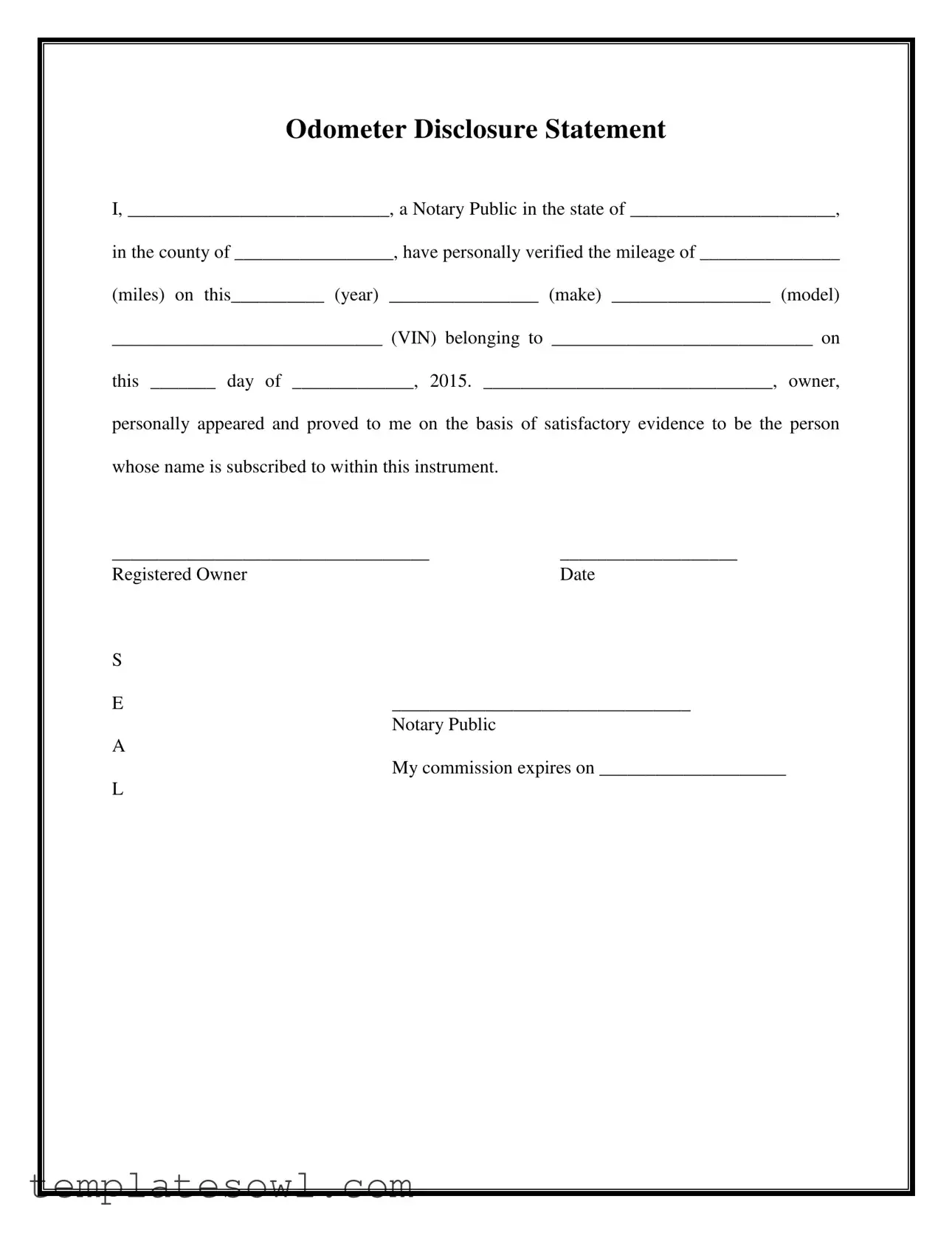Fill Out Your Notarized Odometer Statement Form
The Notarized Odometer Statement form is a crucial document used to verify the mileage of a vehicle during a sale. This statement is signed in the presence of a notary, adding an extra layer of authenticity and trustworthiness to the transaction. Interested in ensuring a smooth vehicle transfer? Fill out the form by clicking the button below.
Launch Notarized Odometer Statement Editor Now

